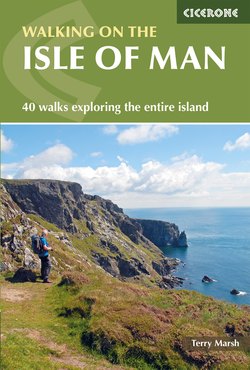Читать книгу Walking on the Isle of Man - Terry Marsh - Страница 12
На сайте Литреса книга снята с продажи.
ОглавлениеWALK 1
Ayres, Point of Ayre and Bride
| Start/Finish | Ayres Visitor Centre (NX 435 038) |
| Distance | 12km (7½ miles) |
| Height gain | 80m (262ft) |
| Refreshments | Tea room in Bride |
| Parking | At visitor centre |
This walk is for birdwatchers and those who love being close to the sea. The island’s northern coastline plays host to almost every species of bird listed for the island at some time during each year, and invariably includes many interesting migratory, passage birds. Unfortunately there is quite a bit of road walking to make the walk into a proper circuit, and this detracts from the walk a little as well as introducing a note of danger as the roads are not pedestrian-friendly, having neither footpaths nor verges. Consider retracing your steps from Phurt rather than risking the road section, especially if there are young, elderly or animals in the party, although Bride is always worth a visit.
AYRES NATIONAL NATURE RESERVE
The nature reserve has a total area of 272ha (673 acres). The site is internationally important for breeding birds, and the whole area of outstanding interest for natural historians. Out at sea gannet, shag, cormorant, guillemot, and little, common and arctic terns are frequent visitors – along with the occasional black-throated and great northern diver. Don’t be surprised to spot the dorsal fins of whales and porpoises, as well as the bobbing heads of grey seals. Along the shore, and inland among the dunes and heath, expect to find ringed plover, oystercatcher, sanderling, dunlin, curlew, stonechat, skylark and whinchat. Wild flowers are especially rich here, and include pyramidal and early purple orchids, wild thyme and burnet rose. From 1 April to 31 July, dogs must be on a lead.
Fishermen favour this northernmost tip of the island, and can often be seen here, shore casting for mackerel or plaice.
From the Ayres National Nature Reserve Visitor Centre (rarely open as it is staffed by volunteers), either take to a grassy track starting from near the information panels heading towards the distant lighthouse, or walk back along the access road for about 50m to a paved path that sets you off in the same direction, but with firmer footing, something that will be appreciated at certain times of the year. When the paving ends, the path joins the grassy track, running close enough to the upper level of the beach to give good sightings of the birdlife here.
Ayres National Nature Reserve is a favoured breeding ground for birds, so during the breeding season care needs to be exercised in the placement of one’s feet, and any dogs need the control of a tight rein.
Regular visitors to the reserve include ringed plover, little tern, common/Arctic tern, oystercatcher, curlew, black-throated diver, eider, shag, cormorant, gannet, stonechat, meadow pipit and skylark.
The grassy track leads on steadily to the Point of Ayre lighthouse.
The Point of Ayre lighthouse
The Point of Ayre lighthouse – controlled by the Northern Lights Board of Scotland, not Trinity House, as might be supposed – was built between 1815 and 1818 by Robert Stevenson, the grandfather of Robert Louis Stevenson.
Just beyond the lighthouse, the coastline heads south, so either bear right or get your feet wet. Offshore, it is not unusual to be treated to the sight of some turbulent water: two different tidal systems meet here and produce quite a frenzy on a good day. But on dry land, the route heads south, and continues just above the shore edge as far as a couple of cottages at Phurt. It is possible to turn inland a little earlier than this, when the ongoing track does so, but otherwise a narrow, field-edge path leads on to Phurt.
From here on, all is road walking; first to the lovely village of Bride, with its church dedicated to St Bridget. And from there along the A10, through Glentruan, continuing as far as the turning to Ballaghennie Farm (NX 439 019). There, turn right, down a road lovely in spring with wild flowers, leading back to the shore at the visitor centre.
